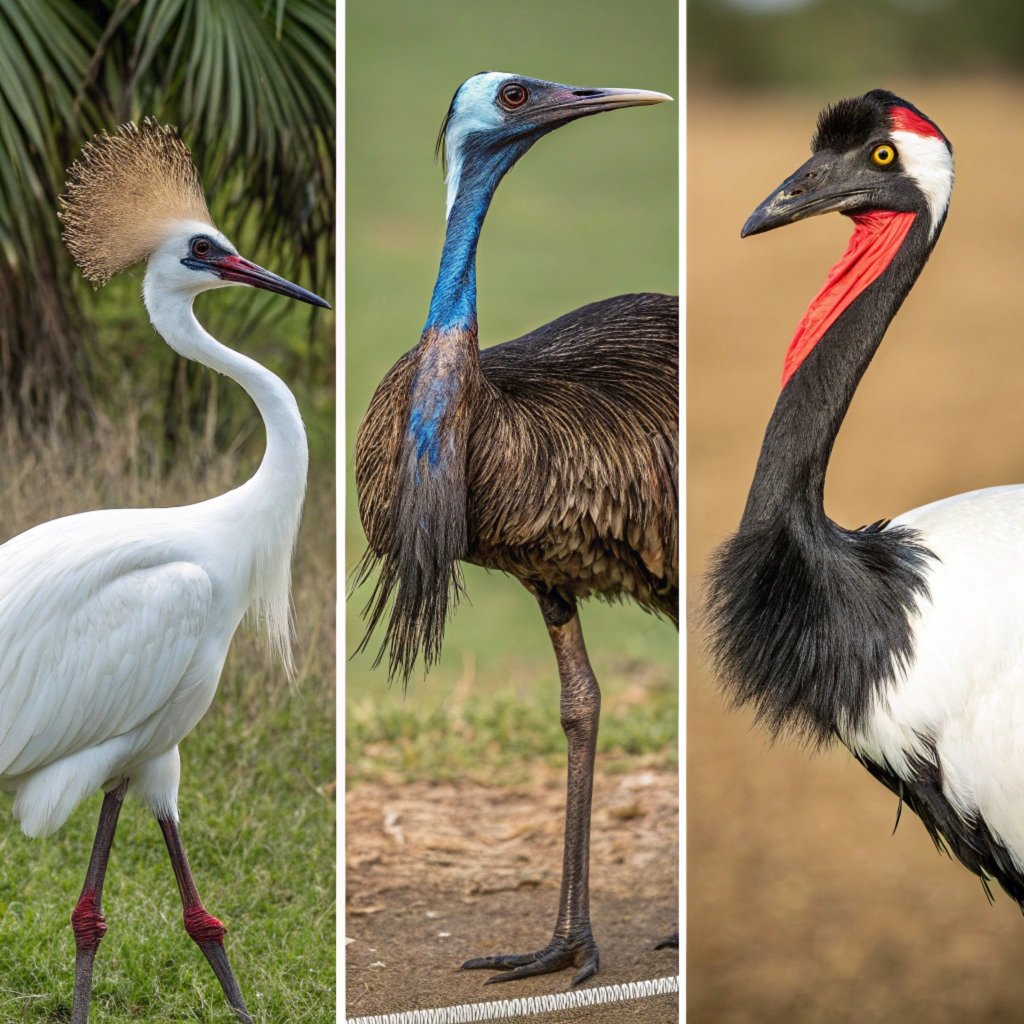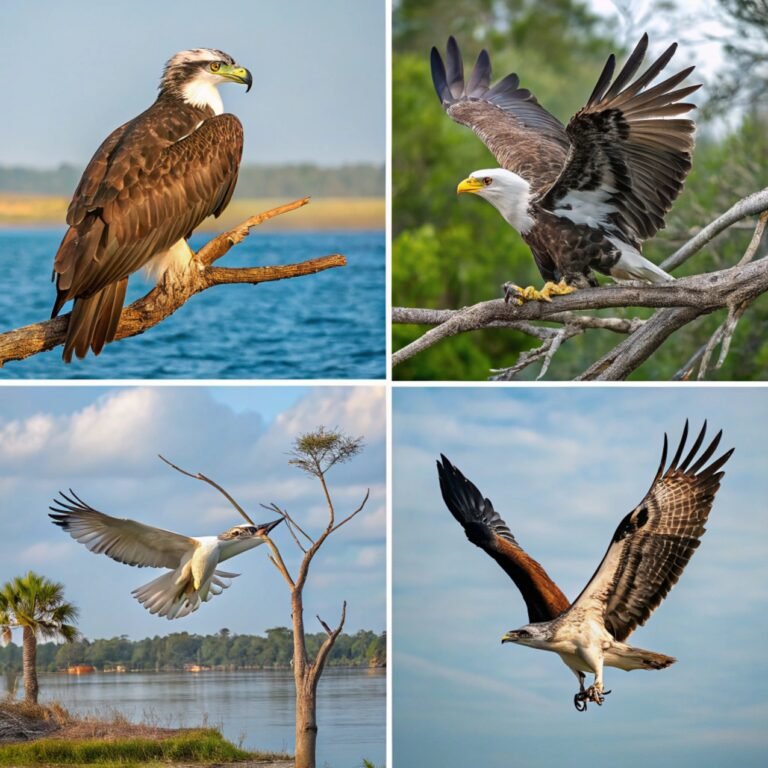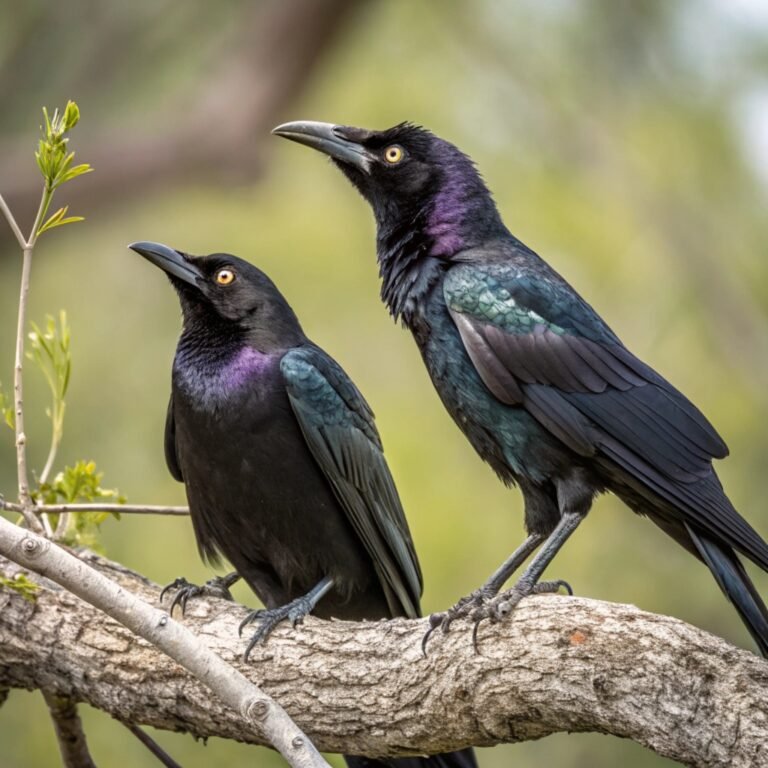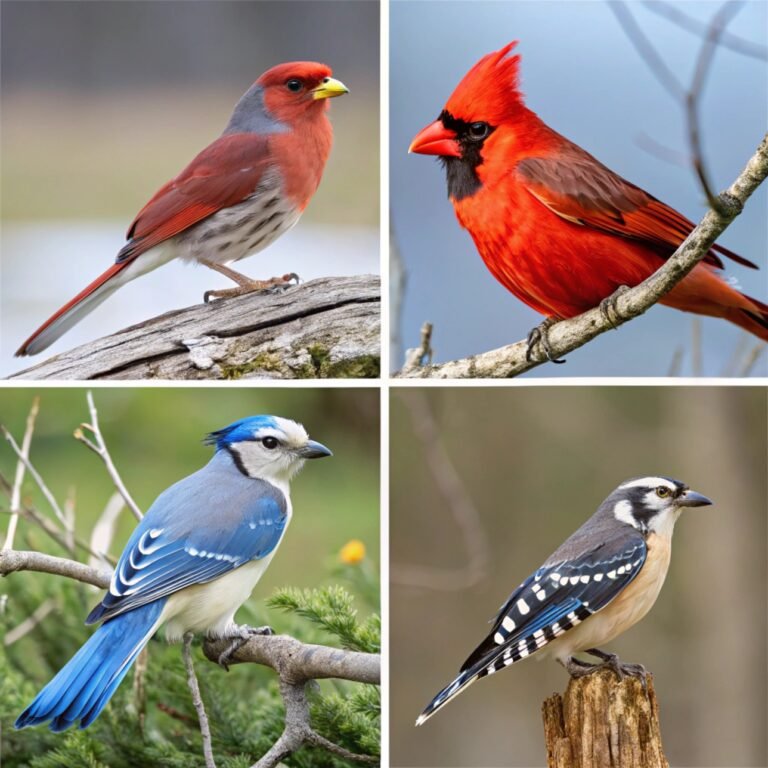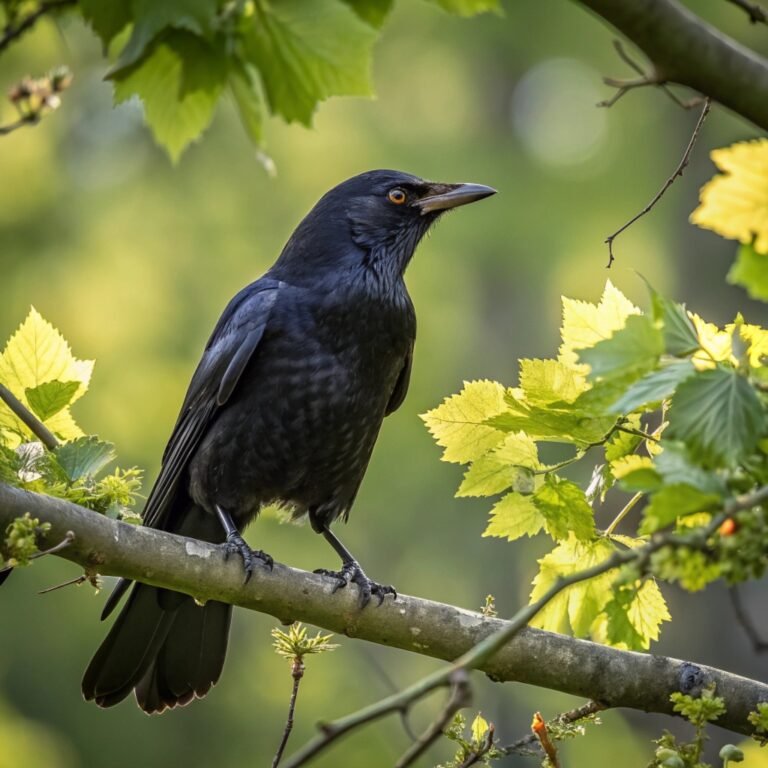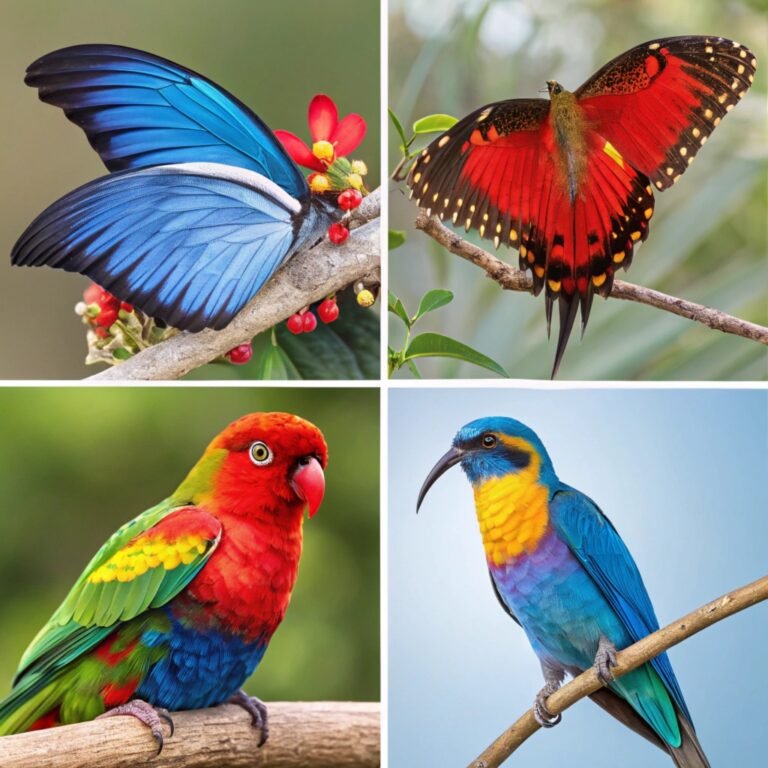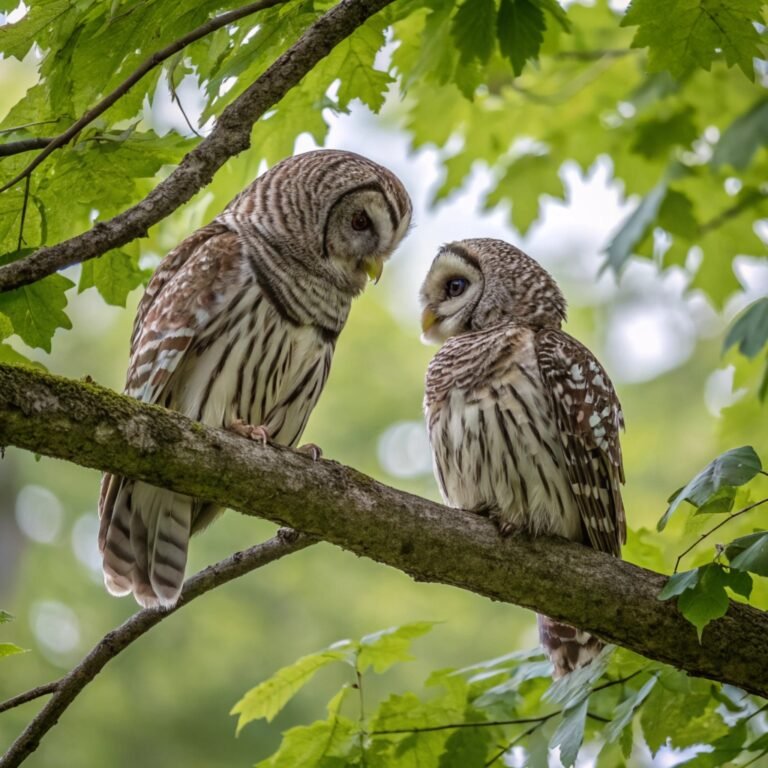10 Largest Birds on Earth: Nature’s Magnificent Avian Giants
Birds have long captivated human imagination with their ability to soar through the skies and their diverse array of shapes, sizes, and behaviors.
While many birds are known for their delicate beauty and small stature, there exists a category of avian species that stand out for their sheer size and impressive presence.
In this comprehensive guide, we’ll explore the top 10 largest birds on Earth, delving into their unique characteristics, habitats, and ecological significance.
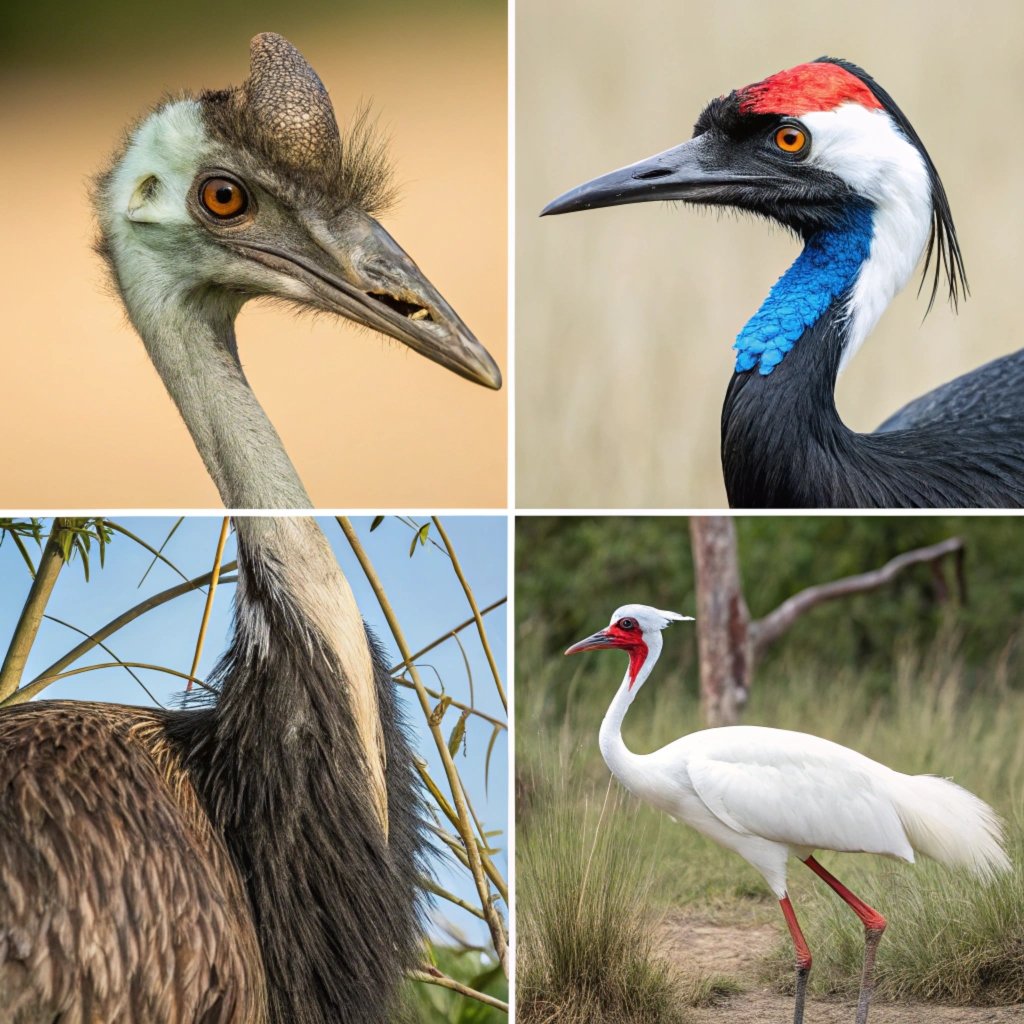
Key Takeaways:
Before we dive into the details of each magnificent bird, let’s take a quick look at the key takeaways about these avian giants:
- Ostrich: The undisputed champion of bird size, standing up to 9 feet tall and weighing over 300 pounds. Known for its incredible running speed and massive eggs.
- Emu: Australia’s largest bird and the second-largest globally, with powerful legs built for running and a distinctive booming call.
- Southern Cassowary: A colorful and potentially dangerous bird, recognized by its vibrant blue neck and helmet-like casque.
- Greater Rhea: South America’s largest bird, often compared to a smaller ostrich, with males taking on the unusual role of egg incubation.
- Dalmatian Pelican: One of the largest flying birds, boasting an impressive wingspan of up to 11 feet and a distinctive large bill pouch.
- Andean Condor: A majestic scavenger of the Andes Mountains, with a wingspan exceeding 10 feet and a crucial role in its ecosystem.
- Great Bustard: Holding the title of the heaviest flying bird, known for its elaborate mating displays.
- Wandering Albatross: Record holder for the largest wingspan of any living bird, capable of gliding across vast oceanic distances.
- Emperor Penguin: The tallest and heaviest of all penguin species, adapted to survive in Antarctica’s harsh climate.
- Shoebill Stork: Recognized for its massive shoe-shaped bill and solitary hunting behavior in African swamps.
Now, let’s explore each of these fascinating birds in greater detail, uncovering what makes them truly extraordinary members of the avian world.
Ostrich
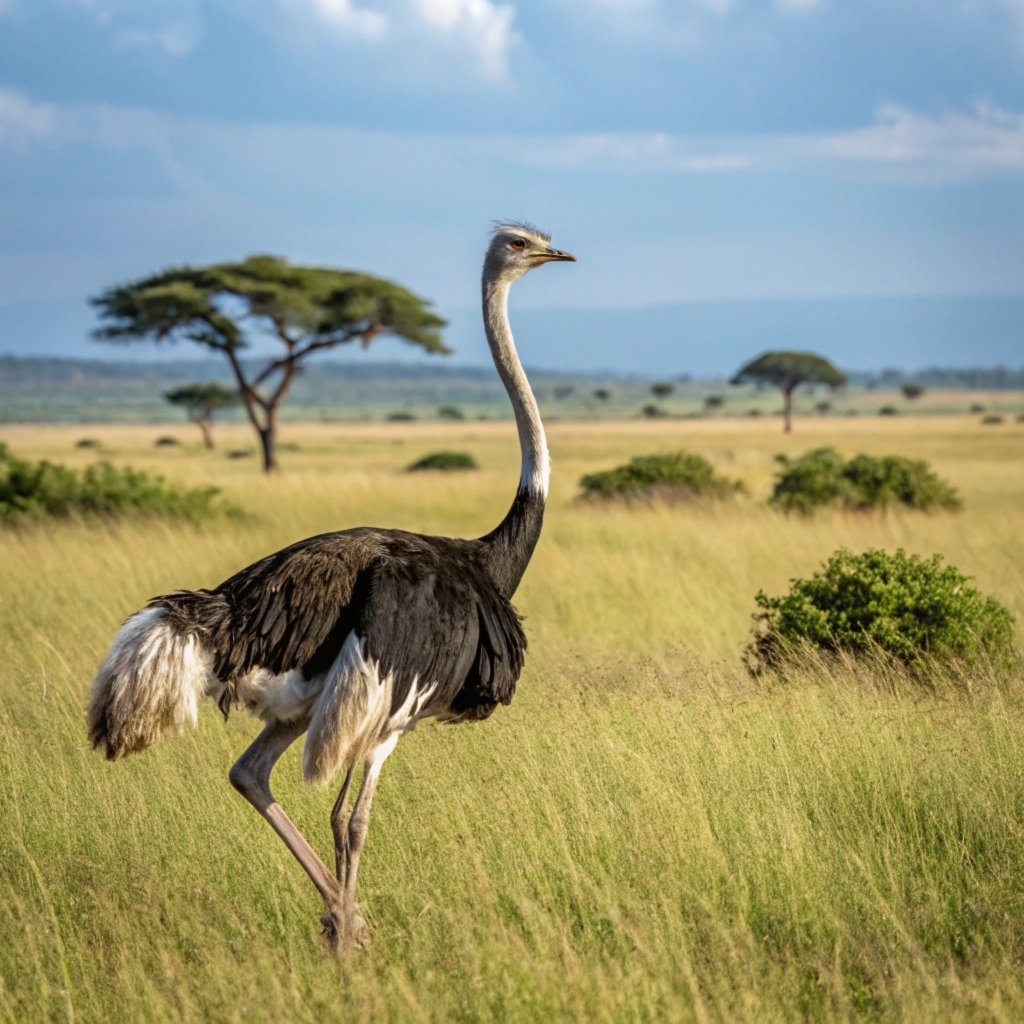
The ostrich (Struthio camelus) stands tall as the undeniable giant of the bird world. Native to the vast savannas and deserts of Africa, this flightless bird can reach astonishing heights of up to 9 feet and tip the scales at a whopping 350 pounds.
Despite its inability to take to the skies, the ostrich has evolved into one of nature’s most efficient runners, capable of reaching speeds up to 43 miles per hour.
This remarkable speed is made possible by the ostrich’s powerful, long legs, which allow it to cover vast distances with minimal effort.
Interestingly, ostriches use their wings as rudders while running, helping them maintain balance and change direction swiftly when needed.
This adaptation showcases how evolution has fine-tuned the ostrich’s body for life on the ground rather than in the air.
One of the most fascinating aspects of the ostrich is its reproductive cycle. These birds are known for laying the largest eggs of any living bird species.
Each ostrich egg weighs around 3 pounds, equivalent to about two dozen chicken eggs! The size of these eggs is a testament to the ostrich’s massive stature and the energy requirements of its offspring.
Emu
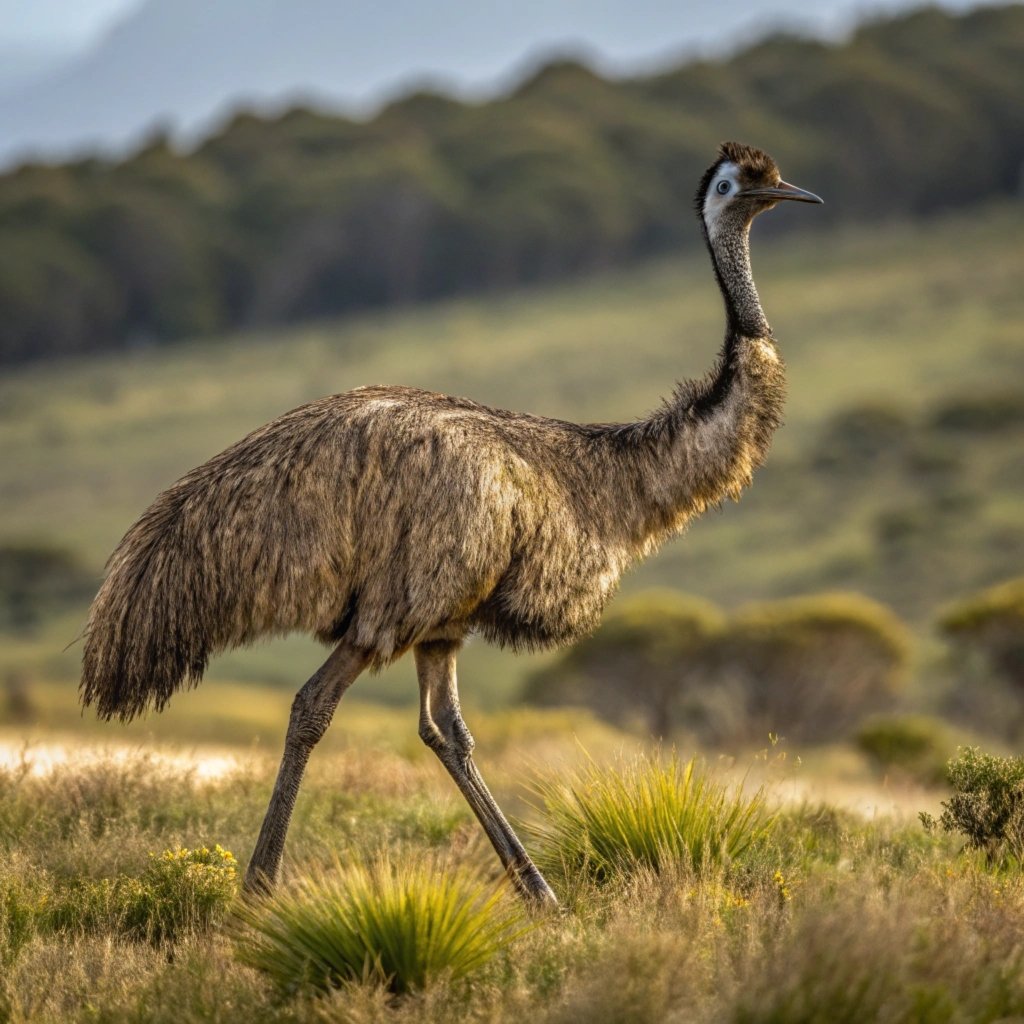
The emu (Dromaius novaehollandiae) holds the title of the second-largest bird in the world and is Australia’s largest native bird.
Standing up to 6 feet tall and weighing around 150 pounds, emus are an impressive sight in the diverse landscapes of the Australian continent.
Like their African cousins, the ostriches, emus are flightless birds that have evolved powerful legs for running.
These legs enable emus to reach speeds of up to 30 miles per hour, making them one of the fastest birds on land.
This speed is crucial for their survival in the varied and often harsh Australian environments, allowing them to escape predators and cover large territories in search of food and water.
Emus are omnivorous, with a diet that includes a wide variety of plants, insects, and small animals.
This diverse diet plays a vital role in their ecosystem, as emus help disperse seeds through their droppings, contributing to the regeneration and spread of various plant species across their habitat.
Their ability to adapt to different food sources also allows them to thrive in diverse environments, from forests to more arid regions.
One of the most distinctive features of emus is their deep, booming call. This vocalization can be heard over long distances and is an important part of their communication, especially during the breeding season.
Southern Cassowary

The southern cassowary (Casuarius casuarius) is perhaps one of the most striking and unique birds on our list of avian giants.
Found in the tropical rainforests of northern Australia and New Guinea, cassowaries can grow up to 6 feet tall and weigh around 130 pounds.
Their appearance is nothing short of prehistoric, with vibrant blue necks, red wattles, and a distinctive helmet-like casque atop their heads.
This casque, made of keratin (the same material as human fingernails), is believed to serve multiple purposes.
It may act as a resonating chamber for the bird’s low-frequency booming calls, help regulate body temperature, or even be used as a battering ram in fights with other cassowaries. The exact function is still a subject of debate among ornithologists.
Cassowaries are primarily frugivores, meaning their diet consists mainly of fruits. This dietary preference makes them crucial to the health and biodiversity of their rainforest habitats.
As they move through the forest, cassowaries disperse seeds from the fruits they eat, sometimes carrying them for kilometers before depositing them in their droppings.
This seed dispersal is vital for many rainforest plant species, some of which rely almost exclusively on cassowaries for propagation.
Despite their important ecological role, cassowaries have gained a reputation as one of the world’s most dangerous birds.
While they generally prefer to avoid human contact, when threatened, they can become extremely aggressive.
Their powerful legs are equipped with dagger-like claws, which they can use to deliver potentially lethal kicks.
Greater Rhea
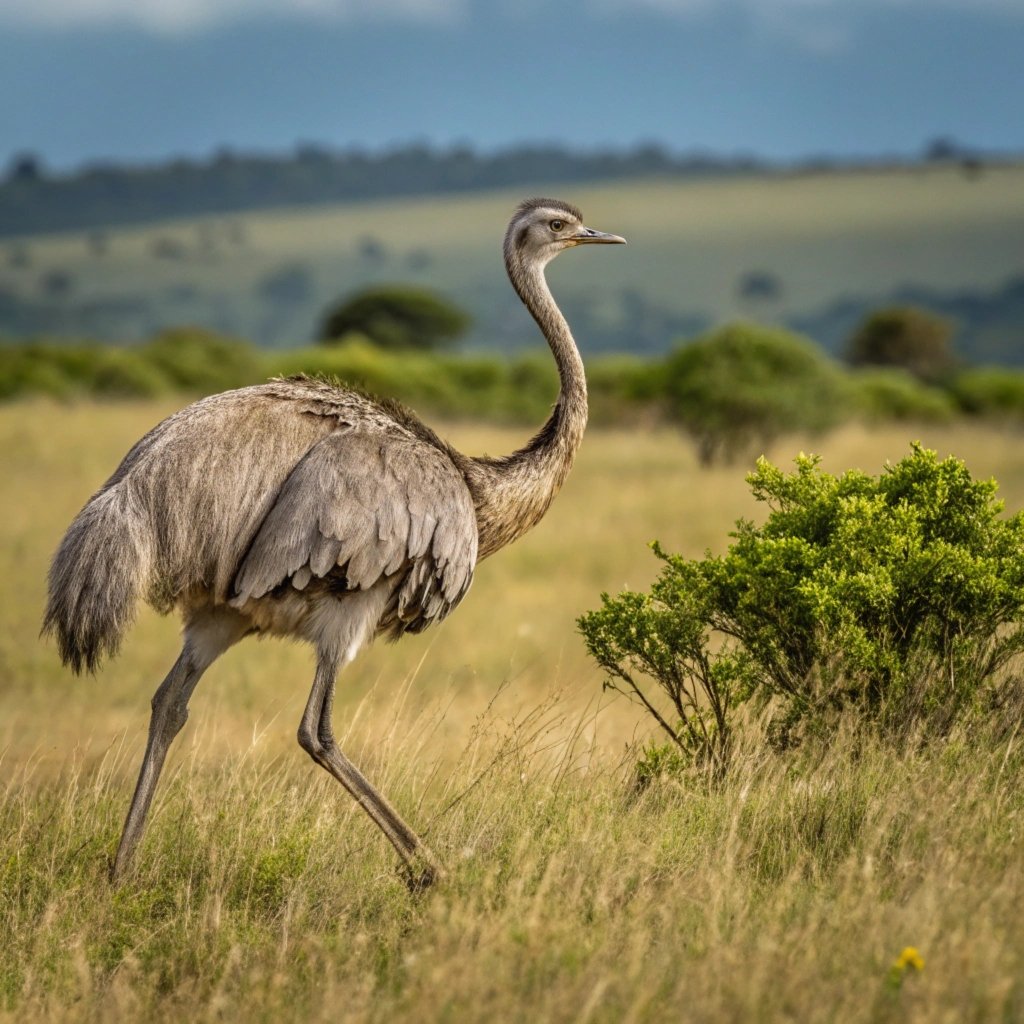
The greater rhea (Rhea americana) is often described as South America’s answer to the ostrich.
These impressive flightless birds stand about 5 feet tall and can weigh up to 88 pounds, making them the largest bird native to the Americas.
Found in the grasslands and savannas across Brazil, Argentina, and Uruguay, rheas have adapted perfectly to life on the ground.
Like their African counterparts, greater rheas are excellent runners. They can reach speeds of up to 40 miles per hour, using their long, powerful legs to escape predators and cover vast distances in search of food.
Their wings, while not suitable for flight, play a crucial role in balance and maneuvering during these high-speed runs.
Rheas are omnivorous, with a diet that includes a wide variety of plants, seeds, insects, and small vertebrates.
This diverse diet allows them to adapt to seasonal changes in food availability and contributes to their role in seed dispersal within their ecosystems.
Their foraging behavior also helps control insect populations, making them an important part of the ecological balance in their habitats.
One of the most fascinating aspects of greater rhea behavior is their unique reproductive strategy. During the breeding season, male rheas become fiercely territorial, competing for the attention of females.
What sets them apart is that after mating, it’s the male who takes on the primary parenting role.
Dalmatian Pelican
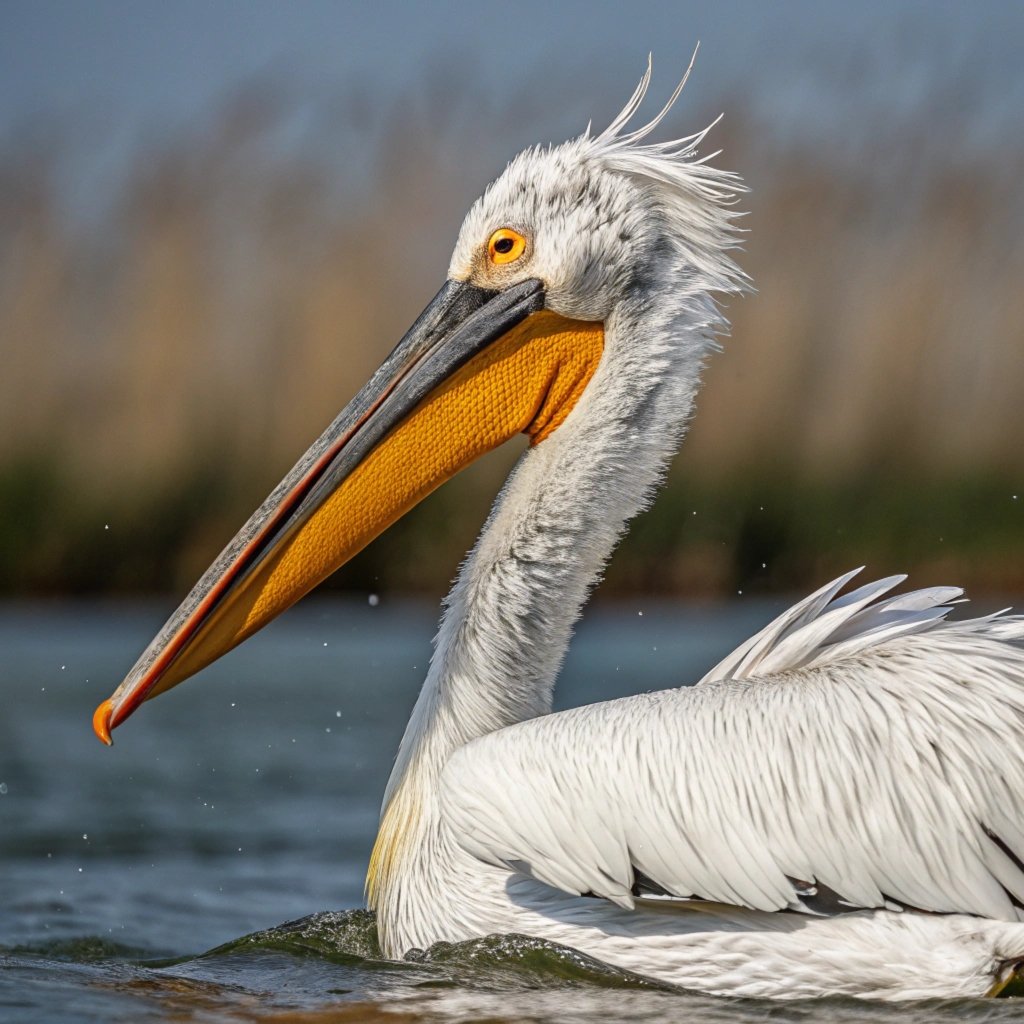
The Dalmatian pelican (Pelecanus crispus) is one of the largest flying birds in the world, earning its place on our list of avian giants.
With a wingspan reaching up to an impressive 11 feet and a weight of around 33 pounds, these pelicans are truly majestic in flight.
Native to eastern Europe and parts of Asia, Dalmatian pelicans inhabit a variety of wetland habitats, including lakes, rivers, and coastal areas.
What sets the Dalmatian pelican apart from other large birds is its ability to combine its massive size with the gift of flight.
Despite their bulk, these birds are graceful in the air, using their enormous wings to soar effortlessly on thermal currents.
This ability to fly long distances allows them to migrate between breeding and wintering grounds, sometimes covering hundreds of miles.
One of the most distinctive features of the Dalmatian pelican is its enormous bill and expandable throat pouch.
Andean Condor
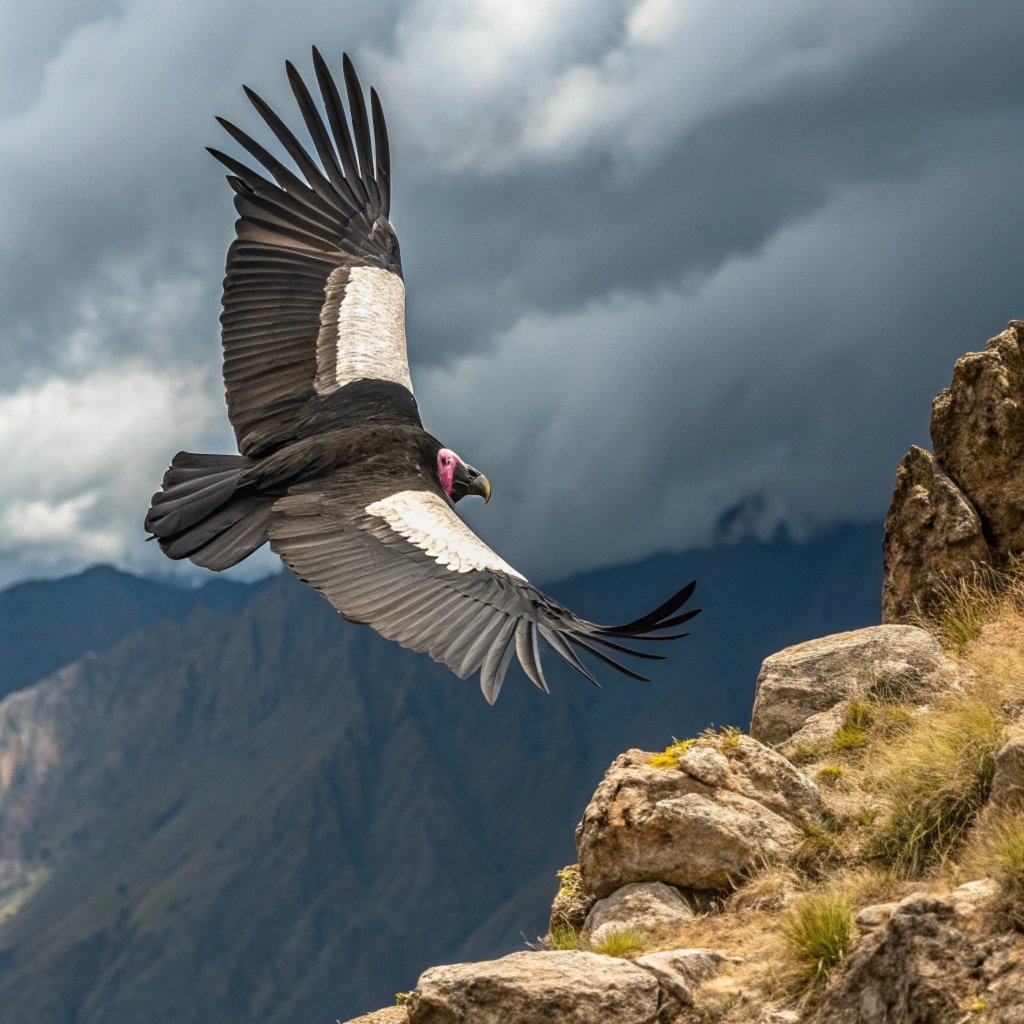
The Andean condor (Vultur gryphus) is a bird that truly embodies the spirit of freedom and power.
As one of the largest flying birds in the world, the Andean condor boasts a wingspan of over 10 feet and can weigh up to 33 pounds.
This majestic scavenger is found soaring high above the Andes Mountains and along the Pacific coast of South America, where it plays a crucial role in the ecosystem.
What makes the Andean condor particularly remarkable is its ability to fly at extreme altitudes.
These birds have been observed soaring at heights of up to 15,000 feet above sea level, taking advantage of the strong thermal currents that rise along the mountain slopes.
This incredible flying ability allows condors to cover vast distances with minimal energy expenditure, as they search for carrion across their expansive territories.
The Andean condor’s appearance is as striking as its flying prowess. Adults have a distinctive white ruff around their necks, contrasting sharply with their otherwise black plumage.
Males can be distinguished from females by the presence of a large comb on top of their heads.
This comb, along with the bird’s ability to change the color of its bare skin through increased blood flow, plays a role in courtship displays and social interactions.
Great Bustard

The great bustard (Otis tarda) holds the impressive title of being the heaviest flying bird on Earth. Males of this species can weigh up to a staggering 46 pounds and have a wingspan of nearly 8 feet.
Native to parts of Europe and Asia, these remarkable birds inhabit open grasslands and agricultural areas, where their size and distinctive appearance make them a truly impressive sight.
Despite their hefty weight, great bustards are capable of flight, although they prefer to walk or run when possible.
Their flight is powerful but requires a lot of energy, so they typically only take to the air when necessary, such as during migration or to escape predators.
When they do fly, their large size and steady wingbeats create a spectacle that’s hard to forget.
One of the most fascinating aspects of great bustard biology is their elaborate mating ritual. During the breeding season, male bustards gather in areas called leks to perform impressive displays aimed at attracting females.
Wandering Albatross

The wandering albatross (Diomedea exulans) is a true marvel of avian evolution, holding the record for the largest wingspan of any living bird.
With wings that can span up to an incredible 12 feet from tip to tip, these majestic seabirds are perfectly adapted for life on the open ocean.
Found primarily in the Southern Hemisphere, wandering albatrosses spend the majority of their lives gliding effortlessly over vast expanses of water, rarely touching land except to breed.
The wandering albatross’s enormous wingspan allows it to exploit a flying technique known as dynamic soaring. By using the wind gradients above the ocean surface, these birds can cover enormous distances with minimal energy expenditure.
They’ve been known to fly up to 10,000 miles in a single journey and can circumnavigate the entire Southern Ocean in just 46 days.
One of the most remarkable aspects of the wandering albatross is its longevity and breeding habits. These birds are among the longest-lived of all wild birds, with some individuals known to live for over 50 years.
They form monogamous pairs that mate for life, returning to the same remote oceanic islands year after year to breed.
The breeding cycle of the wandering albatross is exceptionally long, lasting almost an entire year from egg-laying to fledging of the chick.
Emperor Penguin
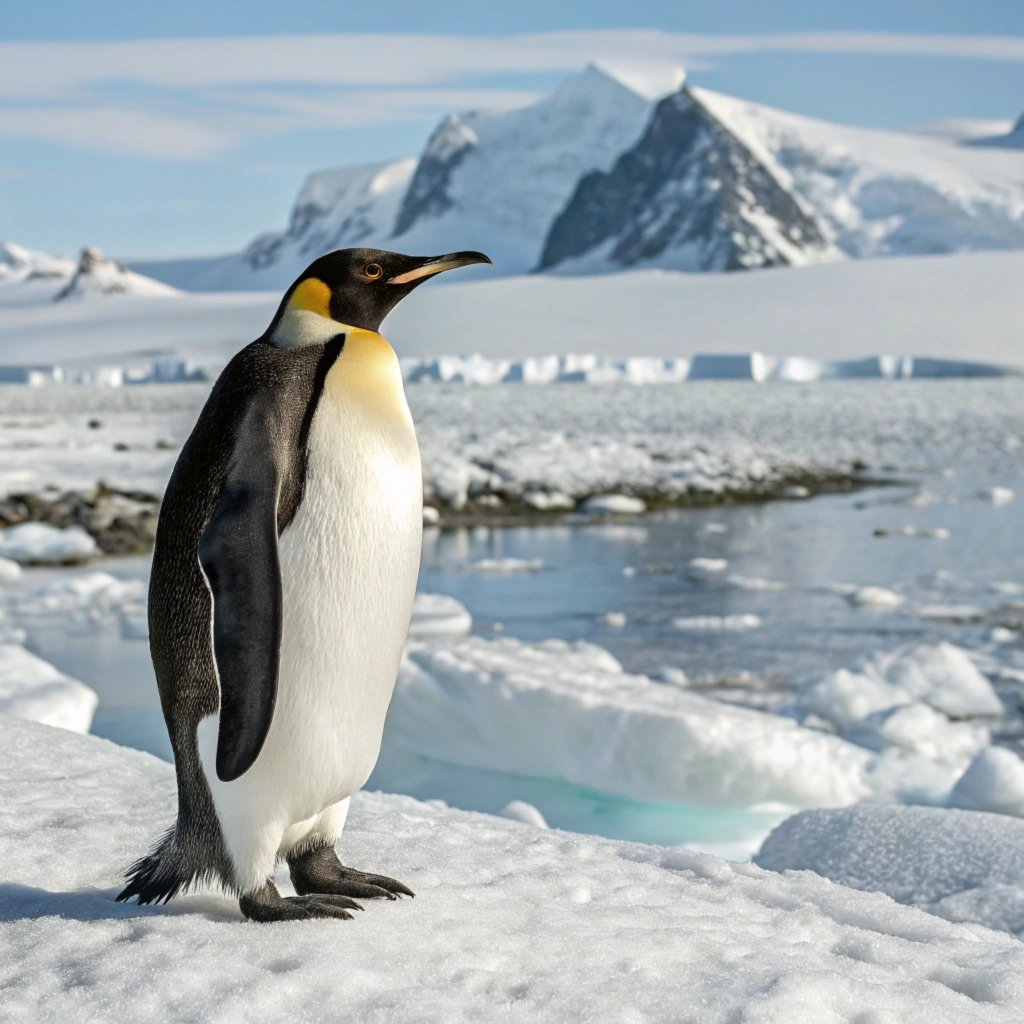
The emperor penguin (Aptenodytes forsteri) stands as the tallest and heaviest of all penguin species, embodying the harsh beauty and resilience of its Antarctic home.
Standing about 4 feet tall and weighing up to 88 pounds, these flightless birds have adapted remarkably to life in one of the planet’s most extreme environments.
Emperor penguins are true Antarctic specialists, rarely venturing north of the Antarctic Circle. Their bodies are perfectly adapted to withstand the frigid temperatures and biting winds of the polar region.
A thick layer of blubber provides insulation, while their dense, oily feathers create a waterproof coat that keeps them dry even in icy waters.
Perhaps the most fascinating aspect of emperor penguin biology is their unique breeding cycle.
These birds breed during the Antarctic winter, when temperatures can plummet to -60°C (-76°F) and winds can reach up to 200 km/h (124 mph).
After the female lays a single egg, she transfers it to the male, who incubates it on his feet, covered by a flap of skin called a brood pouch.
During this incubation period, which lasts about two months, the males huddle together to conserve heat, taking turns moving from the cold exterior to the warmer interior of the group.
Meanwhile, the females journey up to 50 miles across the ice to open water, where they feed to build up reserves for when they return to feed the chicks.
Shoebill Stork
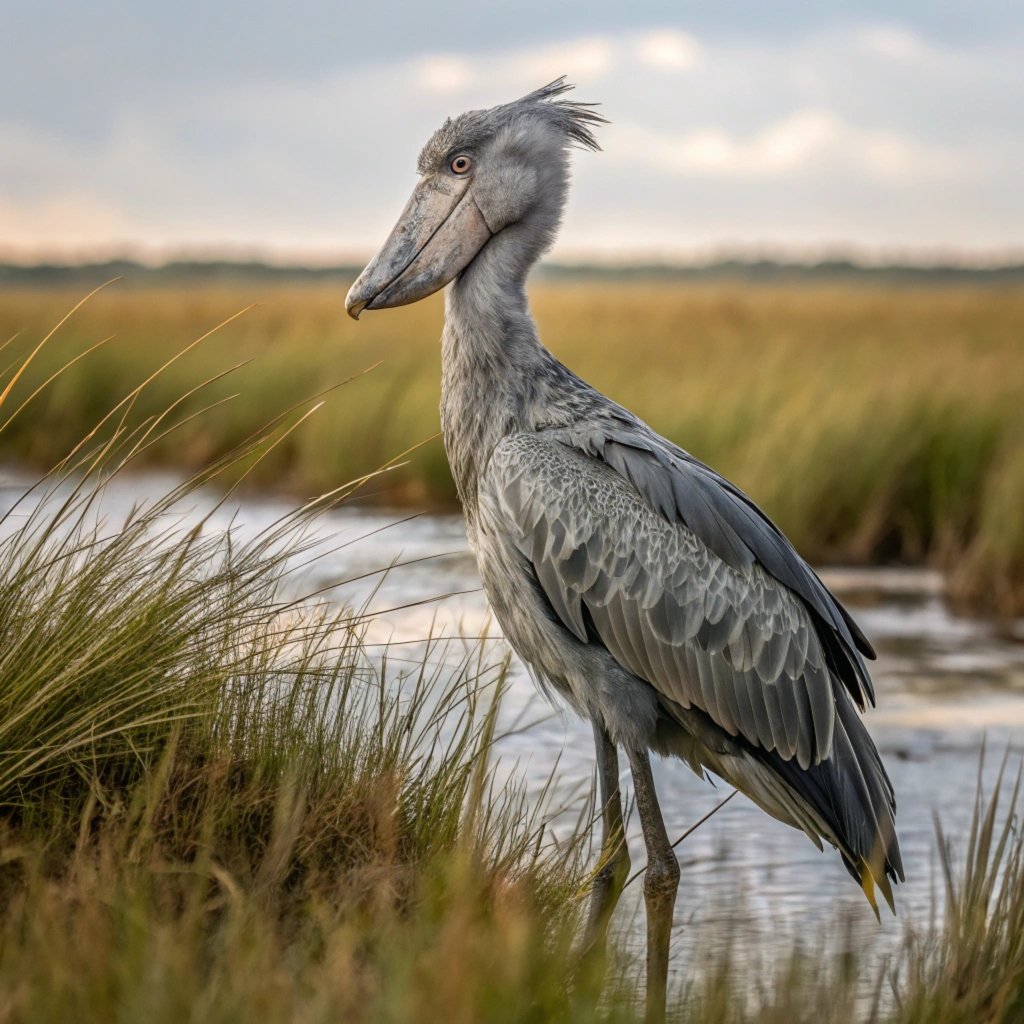
The shoebill stork (Balaeniceps rex), also known as the whalehead or shoe-billed stork, is one of Africa’s most distinctive and enigmatic birds.
Standing around 5 feet tall with a wingspan exceeding 8 feet, the shoebill is immediately recognizable by its massive, shoe-shaped bill that gives the species its common name.
Native to the swamps and marshes of central and east Africa, shoebills are solitary birds that have captured the imagination of birdwatchers and naturalists worldwide.
Their prehistoric appearance and unique hunting behavior make them a sought-after sight for wildlife enthusiasts.
The shoebill’s most striking feature is undoubtedly its bill. Measuring up to 24 cm (9.4 inches) long and 20 cm (7.9 inches) wide, this enormous appendage is perfectly adapted for the bird’s specialized hunting technique.
Shoebills are patient hunters, often standing motionless for long periods before striking with lightning speed to catch their prey.
Their diet consists primarily of fish, particularly lungfish and catfish, but they also prey on frogs, snakes, and even small crocodiles.
The shoebill’s hunting strategy involves waiting for prey to surface, then collapsing on it with their massive bill, creating a vacuum that sucks in the unfortunate victim along with water and vegetation.
FAQs
What is the largest bird ever recorded?
The largest bird ever recorded was the extinct elephant bird (Aepyornis maximus) of Madagascar. It stood nearly 10 feet tall and weighed over 1,000 pounds, making it significantly larger than any living bird species.
Can any large birds fly?
Yes, several large birds are capable of flight. The wandering albatross and Andean condor, for example, are among the largest flying birds, with wingspans exceeding 10 feet. Their ability to fly is crucial for covering vast distances in search of food.
Why can’t some large birds fly?
Some large birds, like ostriches and emus, have evolved to be flightless. This adaptation is often due to a lack of natural predators in their environment and the energy efficiency of moving on the ground. Over time, their wings have reduced in size while their legs have become more powerful for running.
Are any large birds endangered?
Yes, several large bird species face conservation challenges. The Andean condor, for instance, is listed as Vulnerable by the IUCN. Habitat loss, hunting, and climate change are common threats to many large bird species.
Which large bird lays the biggest eggs?
The ostrich lays the largest eggs among living birds. An ostrich egg can weigh up to 3 pounds, equivalent to about two dozen chicken eggs!
How do large birds like the wandering albatross stay in the air for so long?
Wandering albatrosses use a technique called dynamic soaring. They exploit wind gradients above the ocean surface, alternating between higher and lower altitudes to gain energy from the wind, allowing them to fly for long periods with minimal energy expenditure.

Hello, I’m Emily Price, the founder of Birds Affection. As a passionate bird enthusiast and spiritual seeker, I’ve always been fascinated by the symbolic meanings and mystical connections between birds and our lives. On this website, I share my knowledge and insights on the spiritual significance of various bird species, exploring their roles as messengers, guides, and teachers. Through my writing, I aim to inspire and educate others on the profound wisdom and beauty that birds bring to our world. Join me on this journey as we delve into the enchanting realm of bird symbolism and discover the hidden meanings behind these magnificent creatures.

